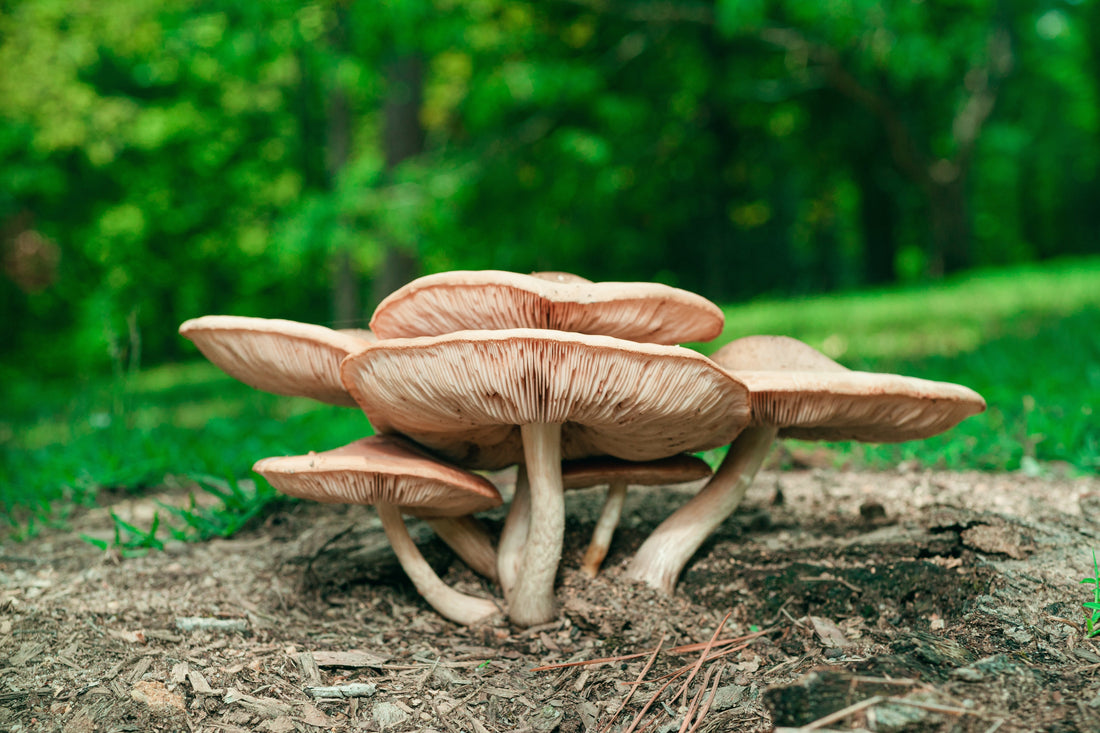
Dried Wild Mushrooms
Dried Wild Mushrooms
Dried wild mushrooms are a pantry secret of top chefs – they bring intense flavor and nutrients. Because drying removes water, 1 oz of dried mushrooms equals about 10 oz of fresh, concentrating their nutrients and flavor. Dried mushrooms have nearly the same vitamins and minerals as fresh ones, but in a lightweight, long-lasting form. They are also easy to store (kept crispy like chips) and can be used year-round, even when wild mushrooms aren’t in season.
Figure: Dried wild mushrooms being rehydrated. Rehydrated mushrooms release rich umami flavor into stocks and stews.
Flavor and Texture
When you rehydrate dried wild mushrooms (soaking them in warm water for 20–60 minutes), they plump up and release a deeply savory “umami” aroma. This earthy flavor boost is perfect for broths, sauces, risottos and stir-fries. For example, dried porcini or shiitake mushrooms melt into a mushroom stock or creamy soup, infusing it with smoky, woody notes. Dried morels or chanterelles add a delicious fragrance to pasta sauces or roasted meats. Because the drying process concentrates their taste, even a small pinch of dried mushrooms can transform a dish. Cooks appreciate that dried mushrooms save prep time – they’re already clean and can be crumbled or sliced into recipes without chopping.
-
Soups & Stews: Toss dried mushrooms directly into soups or stews. They rehydrate in the simmering liquid and infuse it with rich mushroom essence.
-
Grain Dishes: Add rehydrated mushrooms to rice, risotto, quinoa or barley dishes. They add bite and make vegetarian meals heartier (their meaty texture acts like a plant-based protein).
-
Sauté and Stir-Fries: After soaking and draining, sauté mushrooms with garlic and herbs as a topping for pizzas, pasta or veggies. They pair well with greens, brassicas or legumes.
-
Sauces and Gravies: Puree rehydrated mushroom broth into a gravy or sauce (mushroom jus) to serve over poultry or tofu. The natural glutamates in mushrooms create a rich, satisfying umami flavor.
Nutritional Benefits
Dried mushrooms pack more than just flavor – they’re surprisingly nutritious. A typical shiitake mushroom is about 10% protein by dry weight, so they’re a good vegetarian protein boost. They also contain important micronutrients. For example, wild porcini (king bolete) have high levels of selenium and zinc when dried. One 2-3 g portion of dried porcini can supply 15–30% of your daily selenium needs, an antioxidant mineral that supports immune and thyroid health.
Another benefit: vitamin D. Mushrooms naturally make vitamin D when exposed to sunlight. Dried wild mushrooms that have had sun exposure (either before or after drying) can contain significant vitamin D. Simply leaving packaged dried mushrooms in sunlight for 6–8 hours can more than double their vitamin D content. In winter months, when sunlight is scarce, adding a few sun-dried mushrooms to your meals can give your diet a vitamin D boost.
Easy Tips
-
Rehydration: Use room-temperature water for best texture (hot water can shock and toughen them. Soak for 30–60 minutes.
-
Flavorful Broth: Don’t toss the mushroom soaking water – it’s a tasty broth! Strain it and use it as stock in soups or sauces.
-
Storage: Keep dried mushrooms in a cool, dry place in a sealed bag or jar. For peak flavor, use within 6–12 months.
In summary, dried wild mushrooms are an economical, nutrient-rich ingredient. They offer shelf-stable protein and minerals, plus a powerful umami kick to any dish. Next time you cook, reach for dried morel, porcini, chanterelle or shiitake from Nature’s Treat. Rehydrate a handful to elevate your soup, sauce or stir-fry with that distinctive wild mushroom character.
Explore our collection of wild-harvested dried mushrooms – from earthy morels to fragrant porcini and savory shiitakes – and start creating gourmet meals at home. Your pantry (and your taste buds) will thank you!
